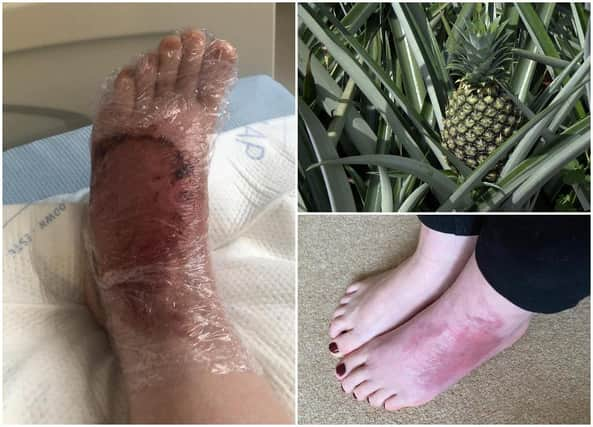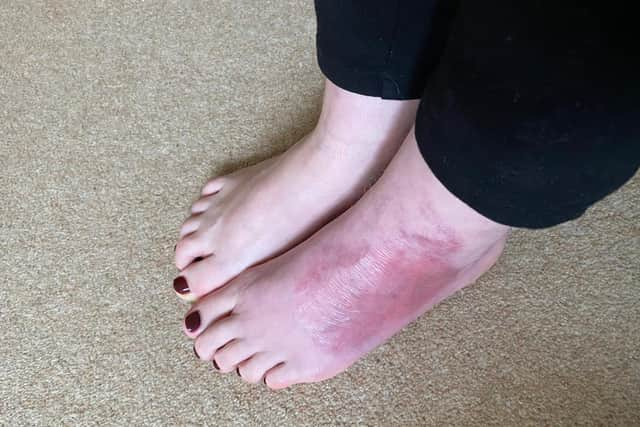Scottish hospital harnesses 'plant power' with pioneering burns treatment made from pineapple


The Wallace Burns Unit at St John’s Hospital in Livingston, West Lothian, has brought in a new treatment called NexoBrid, which reduces the need for skin grafts and speeds up the recovery process.
It involves the use of a tissue-dissolving enzyme called bromelain, made from the pineapple plant, which dissolves burnt tissue, and leaves just healthy tissue behind.
Advertisement
Hide AdAdvertisement
Hide AdThe Wallace Burns Unit usually treats for patients with severe burns that may require general anaesthetic procedures.


Skin grafts are common, where the burnt or dead skin is cut away and a skin graft is taken from another part of the body to allow the area to be reconstructed. While skin grafts are a successful treatment option, the healing times can be long, delaying a return to normal life for many patients.
NexoBrid offers a quicker healing process. The treatment itself lasts around four hours, with a special past and powder being put directly on the burn and surrounding area.
One patient, Lee-Anne Jones, has already felt the benefits of the treatment.
She suffered severe burns when a summer barbeque went wrong and she stepped on the hot sand where a disposable barbecue had been just moments before.


Consultant Burn, Plastic and Reconstructive Surgeon Mr Hilal Bahia recommended the NexoBrid treatment, which enabled Ms Jones to be out of hospital within two weeks, and to return to work around four weeks later.
"This treatment harnesses the amazing power of plants to help treat burns patients. It uses an enzyme called bromelain, which is derived from the pineapple plant, to dissolve burnt tissue without harming any of the surrounding viable tissue,” he said.
"In many patients, the wounds that are left behind are minimised, therefore reducing the need for surgical interventions such as skin grafts.”
Advertisement
Hide AdAdvertisement
Hide AdMs Jones said she was “really grateful” to have had the new treatment.
She said: “I was in St. John’s for just under two weeks. I left on crutches, but within a few days I was able to stop using them. After two weeks I was able to drive, which was amazing and around three to four weeks later I was able to return to work.
“I have nothing but positive things to say about my experience and I am really grateful to have received this new treatment. My care from the hospital was exceptional. I dread to think how long I would have been out of “action” if I had to have several skin grafts! My healing was quick, and my foot is almost brand new, all thanks to the power of the pineapple plant!”
In 2019, 8,245 adults in Scotland were seriously burnt or scalded, with the top causes for burns being kettle spills, hot fluids, fat or other chemicals.
An NHS Lothian spokesperson said: “NHS Lothian is thrilled to be using this ground-breaking treatment and hope its use will help many more future patients like Lee-Anne.”